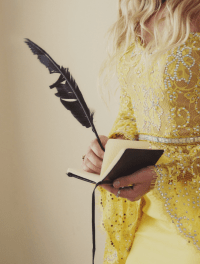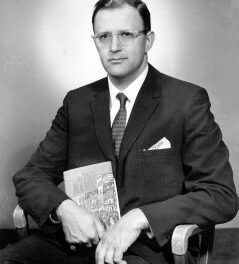We support our Publishers and Content Creators. You can view this story on their website by CLICKING HERE.
In seeing his broken and mortal body in the light of the permanence of his immortal soul, novelist Maurice Baring learned to accept his affliction. Such acceptance is not only the secret of life, as his priest character had proclaimed, it is also the secret of love.
There is a painting in London’s National Portrait Gallery by Sir James Gunn of three writers who were very well-known in their own day. Entitled A Conversation Piece, it shows two writers seated at a table, one with pen in hand, while the third stands behind them. The seated writers are G.K. Chesterton and Hilaire Belloc; the one standing is Maurice Baring. With his customary whimsical wit, Chesterton named the painting “Baring, Over-Bearing and Beyond Bearing.”
Although most serious Catholics will know G.K. Chesterton and many will know the “over-bearing” brilliance of Belloc, there are very few who know anything about Maurice Baring. This was not the case when the painting was first exhibited at the Royal Academy in 1932. At that time, all three writers were household names.
A bestselling novelist during the period between the two World Wars, Maurice Baring’s novels were greatly respected and were very popular internationally, being translated into French, Spanish, and Portuguese. Since this is so, it would be good for today’s Catholics to know more about this great but greatly neglected author and to discover what they’ve been missing in their ignorance of his work.
Maurice Baring was born in 1874, the same year as Chesterton, and died in 1945 from the debilitating effects of Parkinson’s disease. All his novels, on which his reputation chiefly rests, were published between 1921 and 1935. A convert to Catholicism, he was received into the Church in 1909. His popular and highly regarded novels include Robert Peckham, a historical novel set during the Tudor terror of the sixteenth century, and several novels set in contemporary England and Europe.
Hilaire Belloc considered one of Baring’s novels, Cat’s Cradle, to be “a great masterpiece…the best story of a woman’s life that I know.” G.K. Chesterton wrote that he had been “much uplifted” by Baring’s novel The Coat Without Seam, comparing it “with much of the very good Catholic work now being done, especially in France.”
The theme of his first novel, Passing By, is self-sacrificial love and the destructive consequences of its sinful absence. This understanding of love informs all his novels, as does a real sense of divine providence, a fact which earned him the respect of the great French novelist François Mauriac. “What I admire most about Baring’s work,” Mauriac wrote, “is the sense he gives you of the penetration of grace.”
The presence of grace, of which Mauriac speaks, is discovered in the mundane events of everyday life, in the little and almost unnoticed sacrifices made by his characters, and in the manner in which they embrace the sufferings of life. One such character, a priest in Baring’s final novel, Darby and Joan, explains that the acceptance of sorrow is the secret of life. When we understand this, he says, we will understand everything. The secret is not sorrow itself, or suffering, but its acceptance.
It is in the acceptance of suffering, the taking up of the cross, that grace is present in Baring’s novels. From a Christian perspective, this is also the way that grace becomes present in the real world. In this sense, we can say that Baring writes realistic fiction, rooted in the supernatural realism of God’s presence.
Another facet of Baring’s work is its aestheticism. Baring was a highly cultured man, deeply aware of the presence of beauty, and his novels demonstrate the power of art to change lives. This power permeates the whole of Baring’s finest novel, C, his magnum opus. In this marvelous work, the protagonist, who is known simply and enigmatically by the solitary initial, which gives the novel its title, is molded by his experience of the arts.
The young protagonist is swept away by Romantic poetry and by the epic sweep of Wagner’s operas. The arts don’t merely influence him in some passive sense, they possess him. It is almost as though his identity is subsumed within the artistic reality of romance and epic melodrama so that he no longer knows who he really is. The arts forge him and also make a forgery out of him, turning him into something counterfeit and less authentic than he is meant to be. It becomes a false god, an idol.
There is, in the protagonist’s experience, something that reminds us of Dante, an intertextual dimension highlighted by the appearance in the novel of the aptly-named Beatrice, a character who offers an alternative vision of beauty. The novel is slow, the first part of it documenting C’s engagement with the arts, but the reader’s perseverance is rewarded as the conflict between aesthetic ideals and ethical truths runs its course.
Although Baring was best-known as a novelist, he also wrote plays and poetry. With respect to the latter, he is one of the finest poets of the twentieth century. His sonnets on Mozart, Beethoven, Wagner, Tolstoy, and Dostoevsky demonstrate the breadth and depth of his masterful engagement with the finest culture. A gifted musician, he was also a polyglot who had mastered Greek, Latin, and French as a child and German, Swedish, Italian, and Russian during his travels as a diplomat and journalist.
Part of the reason for the decline in Baring’s popularity is the general decline of cultural literacy. The coming peril was not Bolshevism, said Chesterton, but standardization by a low standard. It is this dumbing down of culture to the lowest common denominator of crass banality which makes Baring unreadable to many in what Evelyn Waugh called our deplorable epoch.
When reading Baring, we might be reminded of what Chesterton said of his friend Fr. Vincent McNabb. Speaking of Fr. McNabb’s sanctity, Chesterton wrote that the saintly Dominican walked on a crystal floor above his head. When reading Maurice Baring, we might feel that he is also walking on a crystal floor above our heads, not so much in the sense of his sanctity but in terms of the breadth of culture that he possesses and which we lack.
He is so well-read in so many different languages and so well-versed in the full panoramic landscape of Western literature, that we find ourselves in awe at the depth and the breadth of cultural experience from which his deep draughts of brilliance are drawn. Reading him is humbling. It is hard work. It makes us aware of our limitations. His great but neglected genius is nonetheless worth the effort because the gain far outweighs the pain.
In the acceptance of his own suffering, as he struggled with the debilitating effects of Parkinson’s disease, Maurice Baring was practicing what the priest character was preaching in the novel Darby and Joan. As he struggled to cope with the onset of the affliction that would eventually kill him, he wrote an intensely personal poem:
My body is a broken toy
Which nobody can mend
Unfit for either play or ploy
My body is a broken toy…
My soul is an immortal toy
Which nobody can mar,
An instrument of praise and joy;
My soul is an immortal toy;
Though rusted from the world’s alloy
It glitters like a star;
My soul is an immortal toy
Which nobody can mar.
In seeing his broken and mortal body in the light of the permanence of his immortal soul, Baring learned to accept his affliction. Such acceptance is not only the secret of life, as his priest character had proclaimed, it is also the secret of love. It is a love that lays down its life for the lives of others, a love that welcomes every human life, however broken, in the fullness of the Love that will heal all brokenness.
Republished with gracious permission from Crisis Magazine (January 2024).
This essay is part of a series, Unsung Heroes of Christendom.
The Imaginative Conservative applies the principle of appreciation to the discussion of culture and politics—we approach dialogue with magnanimity rather than with mere civility. Will you help us remain a refreshing oasis in the increasingly contentious arena of modern discourse? Please consider donating now.
The featured image is courtesy of Pixabay.

 Conservative
Conservative  Search
Search Trending
Trending Current News
Current News 





